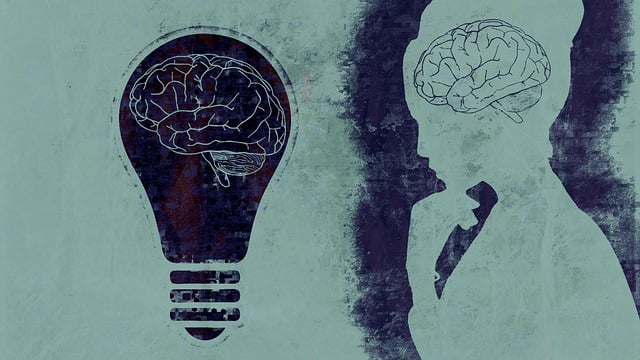Substance abuse among children, especially sexual addiction, is a complex issue with long-lasting effects on brain development and emotional health. It's driven by genetic predispositions, environmental factors, and co-occurring mental health disorders like low self-esteem or anxiety. Prevention involves promoting open communication, mental wellness coaching, and education on healthy boundaries. Therapy for Children Sexual Addiction utilizes evidence-based practices such as CBT, EMDR, and trauma-informed care to address underlying causes. Family-based strategies, including integrated self-care routines and crisis plans, strengthen support systems. Community support through educational programs and early interventions, coupled with addressing underlying issues, is vital for reducing risks and fostering healthier choices.
Substance abuse among children and adolescents is a growing concern, with sexual addiction posing unique challenges. This article delves into comprehensive risk reduction strategies aimed at mitigating the impact of substance misuse on young lives. We explore critical aspects such as understanding the roots of addiction, identifying risk factors specific to sexual addiction in youth, and examining effective therapeutic approaches. Additionally, we highlight family-based interventions and community support systems that foster safe environments, offering valuable insights for parents, educators, and healthcare professionals seeking to combat this issue.
- Understanding Substance Abuse and Its Impact on Children
- Identifying Risk Factors for Sexual Addiction in Youth
- Therapeutic Approaches for Treating Sexual Addiction in Kids
- Family-Based Strategies to Reduce Substance-Related Risks
- Community Support and Preventive Measures for Safe Environments
Understanding Substance Abuse and Its Impact on Children

Substance abuse among children is a growing concern, with significant implications for their present and future well-being. It’s crucial to understand that children’s vulnerability to addiction can be attributed to various factors, including genetic predisposition, environmental influences, and co-occurring mental health disorders. Early exposure to substances can lead to long-term detrimental effects on brain development, impairing cognitive abilities and emotional regulation.
Addressing this issue requires a multifaceted approach. Therapy for Children Sexual Addiction is one specialized area that deals with complex behaviors and their underlying causes. Promoting emotional well-being through evidence-based practices is essential. Communication strategies, such as open dialogue between parents and children, can help identify risks early on. Additionally, mental wellness coaching programs can empower both children and their families with tools to manage stress, build resilience, and foster healthy coping mechanisms, thereby reducing the likelihood of substance abuse.
Identifying Risk Factors for Sexual Addiction in Youth

Identifying risk factors for sexual addiction in youth is a critical step in developing effective prevention strategies and support systems. Adolescents are particularly vulnerable to this issue due to their developmental stage, curiosity, and exposure to various influences. Several factors contribute to the potential development of sexual addiction, including but not limited to, peer pressure, easy access to technology, lack of parental supervision or guidance, and underlying mental health issues such as low self-esteem, anxiety, or depression.
Understanding these risk factors is essential for healthcare professionals, educators, and parents to implement tailored interventions. Early detection through open dialogue, education on healthy boundaries, and promoting mental wellness can significantly reduce the likelihood of sexual addiction. Mental wellness coaching programs can play a pivotal role in teaching youth about consent, emotional healing processes, and developing resilience against potential risks. Therapy for children with sexual addiction should address these underlying factors to ensure comprehensive recovery and long-term mental health.
Therapeutic Approaches for Treating Sexual Addiction in Kids

The treatment of sexual addiction in children requires specialized therapeutic approaches that address the unique complexities of this issue. Many young individuals struggling with sexual addiction have experienced underlying trauma, making it crucial for therapists to integrate trauma-informed care practices. Therapy for children’s sexual addiction often involves a multi-faceted approach, combining cognitive-behavioral therapy (CBT), motivational interviewing, and eye movement desensitization and reprocessing (EMDR). These evidence-based methods help individuals process traumatic experiences, modify maladaptive behaviors, and develop healthier coping strategies.
Mental wellness professionals play a pivotal role in identifying risk factors and providing timely intervention. A comprehensive risk assessment is essential to tailor treatment plans effectively. By offering trauma support services, mental health experts can create safe spaces for children to express their feelings, understand their experiences, and learn healthy boundaries. Through individual or group therapy sessions, children can explore the root causes of their addiction, foster self-awareness, and cultivate resilience, ultimately promoting long-term recovery and improved mental wellness.
Family-Based Strategies to Reduce Substance-Related Risks

Family-based strategies play a crucial role in reducing substance-related risks, especially when addressing underlying issues like children’s sexual addiction. Therapy sessions can create a safe space for open communication, helping family members understand and cope with the challenges. By integrating evidence-based practices, such as cognitive-behavioral therapy (CBT), families learn to identify triggers, develop healthier coping mechanisms, and strengthen their support systems.
Incorporating self-care routines and crisis intervention guidance within the family unit further enhances risk reduction. Teaching members to prioritize mental well-being through stress management techniques and regular exercise can prevent burnout. Additionally, having a pre-established crisis plan ensures that everyone knows how to respond during emergencies, fostering a sense of security and empowering families to navigate challenging situations effectively.
Community Support and Preventive Measures for Safe Environments

Community support plays a pivotal role in mitigating risks associated with substance abuse, especially for vulnerable populations like children and adolescents. Preventive measures, when implemented holistically, can foster safe environments that deter substance misuse. This involves collaborative efforts between schools, community centers, and local authorities to educate youth about the dangers of drug abuse, promoting healthy coping mechanisms, and providing early intervention services. By integrating Mind Over Matter principles into these programs, individuals can learn to manage stress and emotions without resorting to substances, a crucial step in burnout prevention.
Additionally, addressing underlying issues such as trauma, mental health disorders, or social isolation through therapy and support groups is essential. Targeted interventions for at-risk youth, including those struggling with children sexual addiction, can help break the cycle of substance abuse. Boosting confidence and self-esteem, along with teaching vital life skills, equips individuals to make healthier choices, thereby reducing the risk of long-term substance dependency.
In addressing substance abuse, a multi-faceted approach is essential. By understanding the impact on children, identifying risk factors like sexual addiction in youth, and employing therapeutic strategies tailored for kids, we can significantly reduce harm. Family-based interventions and community support play pivotal roles in fostering safe environments. Integrating these comprehensive risk reduction strategies, including therapy for children’s sexual addiction, is crucial to creating a healthier future for our young people.












